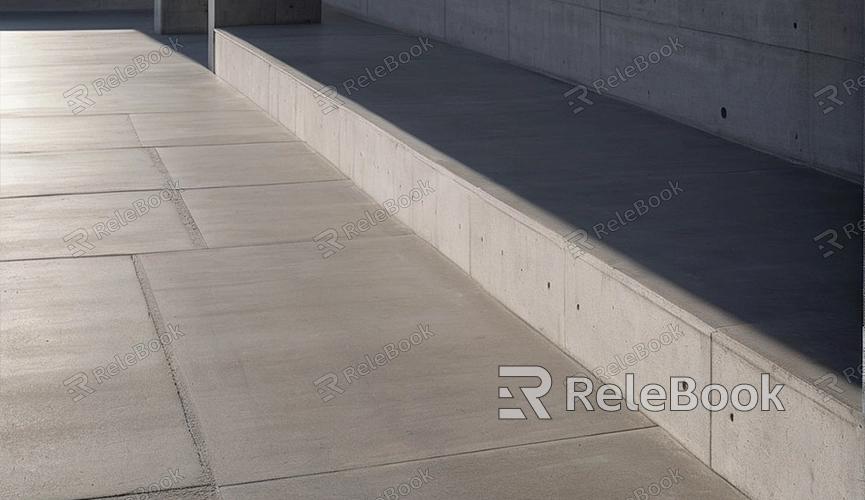Concrete Texture in Blender
Using concrete texture in Blender can significantly enhance the realism and visual depth of architectural models, scene designs, and environmental simulations. Concrete texture simulates various surface effects of concrete in the real world, including smooth cement surfaces, rough exposed aggregate surfaces, and aged effects with cracks and weathering. This texture is crucial in creating modern architectural visualizations, urban environments, industrial scenes, and any 3D projects that require portraying concrete material characteristics.

Role in Blender
1. Enhancing Scene Realism: By applying concrete texture, Blender users can effectively simulate concrete surfaces in the real world, whether it's newly constructed smooth surfaces or weathered rough surfaces.
2. Providing Visual Detail and Complexity: Details in concrete texture such as cracks, holes, and color variations add visual complexity and depth to 3D models, making them more engaging and realistic.
3. Supporting Diverse Design Styles: Concrete texture is suitable not only for industrial and modern design projects but also for scenes with retro or ruinous styles, offering broad application possibilities.
4. Enhancing Material Expression: Concrete, as a common building material, its texture usage helps express different architectural concepts and design intentions, such as austerity, solidity, or simplicity.
5. Improving Rendering Efficiency: By using prefabricated high-quality concrete textures, designers can save time and effort required to create complex materials while maintaining a high level of realism.
Different parameter adjustments result in different rendering effects. Here are common rendering scenarios for this 3D texture in Blender:
1. Architectural Visualization: Used to present concrete elements in architectural designs, such as walls, floors, and pillars.
2. Environmental Design: Simulating urban streets, abandoned factories, or other environments containing concrete structures in game and movie scenes.
3. Props and Detail Enhancement: Adding concrete texture to 3D models like bridges, tunnels, and walls to increase their realism.
4. Art and Abstract Rendering: Using concrete texture in abstract art pieces to explore the visual and emotional expression of materials.
5. Product and Furniture Design: Simulating modern furniture and decorations with concrete texture, such as lamps, tabletops, and art installations.
The application of concrete texture in Blender provides 3D artists and designers with a powerful tool to enhance the realism, visual depth, and artistic expression of their works. By meticulously simulating various characteristics of concrete, concrete texture not only improves the quality of architectural and environmental designs but also provides audiences with richer and more diverse visual experiences. Whether in architectural visualization, game design, movie production, or artistic creation, concrete texture is an indispensable element.

